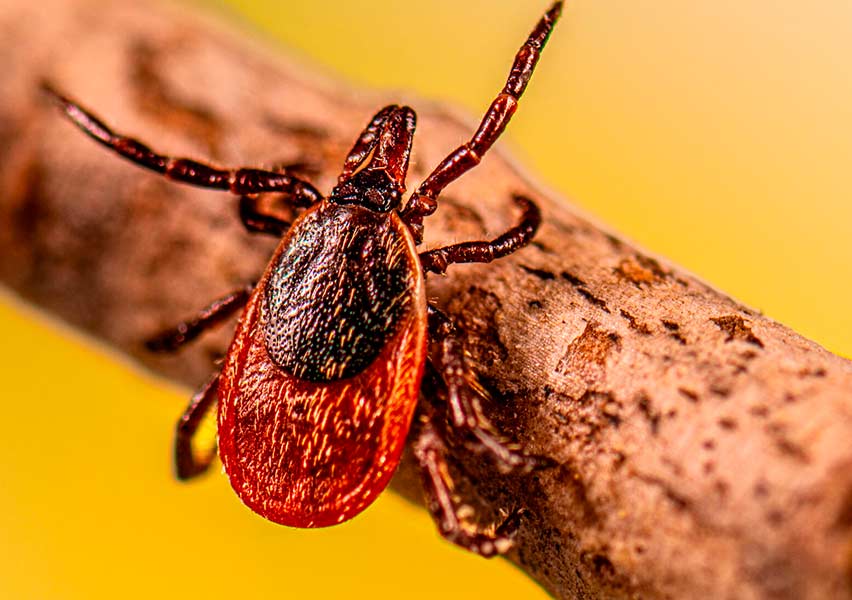Tick-borne encephalitis virus (TBEV)
Tick-borne encephalitis virus (TBEV) is a positive-sense single-stranded RNA virus of the Flavivirus genus, family Flaviviridae. It is the causative agent of tick-borne encephalitis (TBE), a potentially severe viral infection affecting the central nervous system, transmitted primarily by ticks of the Ixodes genus. There are three major subtypes: European (Western), Siberian, and Far Eastern.
Clinical characteristics:
After an incubation period of 7 to 14 days, the disease typically follows a biphasic course:
- First phase: A non-specific flu-like illness with fever, headache, fatigue, and muscle pain lasting 2 to 7 days.
- Second phase (in ~30% of cases): Neurological involvement such as meningitis, encephalitis, or meningoencephalitis, with symptoms including stiff neck, vomiting, confusion, ataxia, and in severe cases, paralysis or long-term neurological sequelae.
The severity varies by subtype: the Far Eastern subtype is more often associated with severe outcomes and higher mortality rates.
Transmission:
TBEV is transmitted mainly through the bite of infected ticks, especially Ixodes ricinus in Europe. Ticks acquire the virus by feeding on infected wild animals such as small mammals (e.g., rodents) or birds, which act as reservoirs without showing signs of disease.
Human infection typically occurs during outdoor activities in endemic areas. In rare cases, TBEV can be transmitted through consumption of unpasteurized dairy products from infected livestock.
Ticks can also transmit the virus transovarially to their offspring, allowing persistence in the environment.
Diagnosis:
Diagnosis is based on clinical presentation and exposure history, confirmed by serological testing (detection of TBEV-specific IgM and IgG antibodies) or PCR in early infection. CSF analysis often reveals pleocytosis in the neurological phase.
Treatment:
There is no specific antiviral treatment for TBE. Management is supportive, including hospitalization in severe cases for monitoring and treatment of neurological complications. Recovery may be complete, though neurological sequelae can persist, particularly in adults.
Prevention:
The main preventive measure is vaccination, especially for individuals living in or traveling to endemic regions. The inactivated TBE vaccine is safe and effective.
Additional preventive strategies include:
- Wearing protective clothing and using tick repellents
- Performing tick checks after outdoor exposure
- Avoiding unpasteurized dairy products in endemic areas

